Given the setup shown in Fig Block A,B and C have masses mA=M and mB=mC=m. The strings are assumed maseless and unstreichable, and the pulleys frictionless .There is no friction between block B and the support table, but there is friction between blocks B and C, denoted by a given coefficient μ
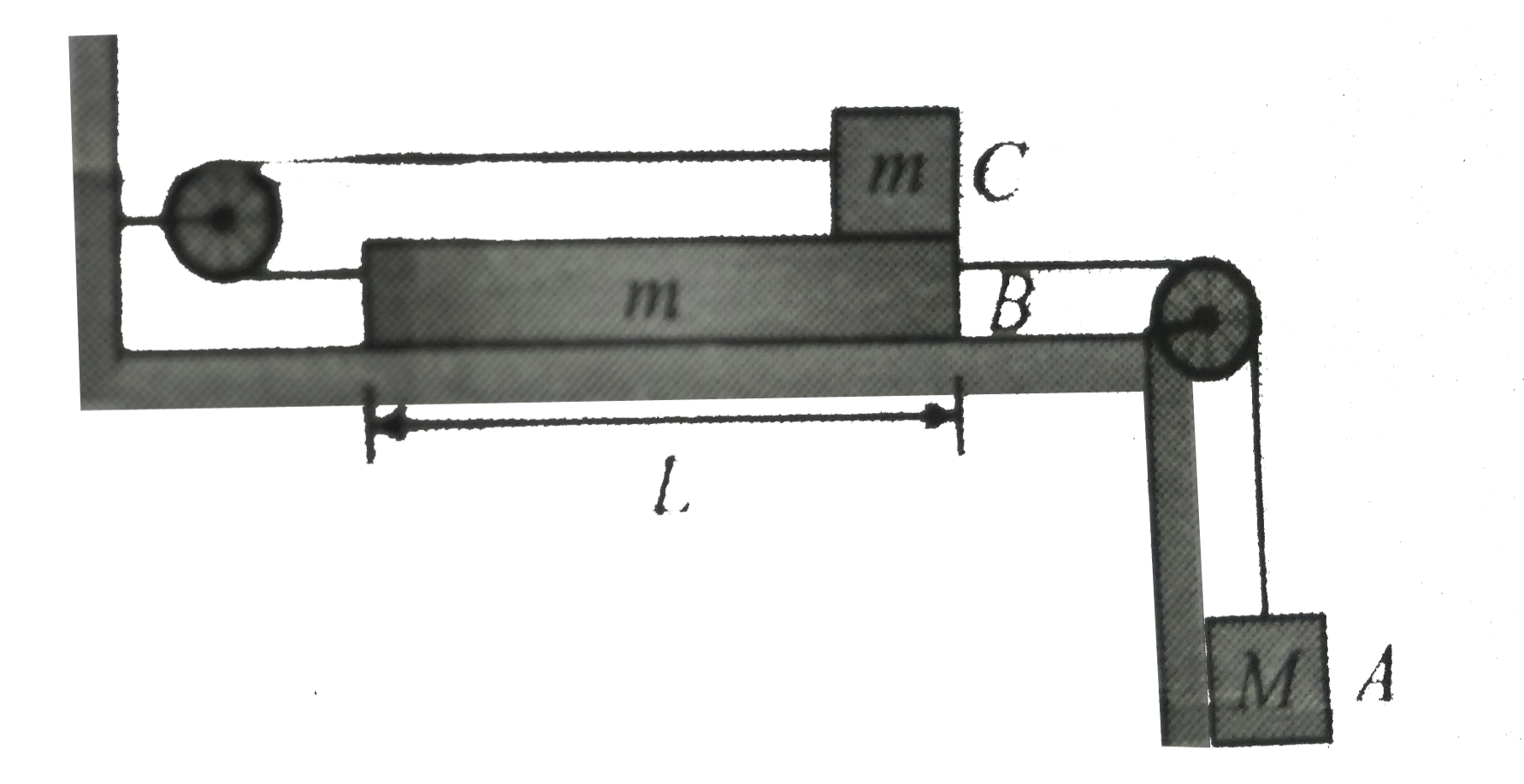
a . In terms the given find (i) the acceleration of block A and B
b. Suppose the system is released from rest with block C near the right end of block B as shown in the above figure. If the the length L of block B is given, what is the speed of block C as it reached the left end of block B ? Tear the size of C as small
c. If the mass of block A is less then some critical value, the blocks will not accelerate when released from rest. Write down as expression for that critical mass.
a. Apply constrain on string , the length of strings is constant . Differentiate twice to get relation between acceleration .Let the acceleration of block A,B and C be a, b and c respectively
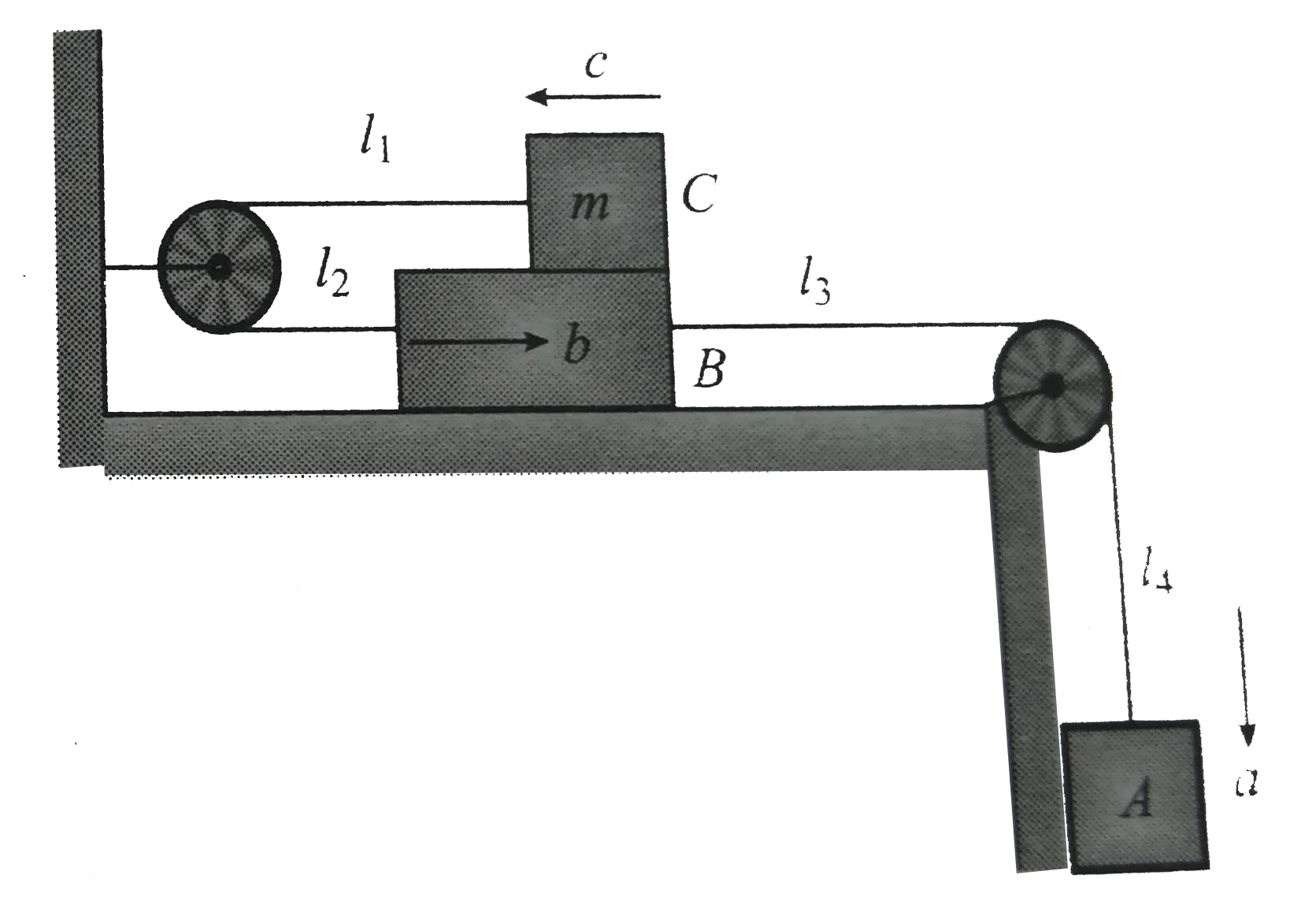
l1+l2= constant
l3+l4= constant
..l1+..l2=0⇒|b|=|c|
..l3+..l4=0⇒|a|=|b|
From which we get a=b=c
From FBD of A,B and C [Fig (a)]

Writing equation of motion for block A :
Mg−T=Ma .....(i)
For block B,T−T1−μmg=ma .....(ii)
Solving equation (i) ,(ii) and (iii) we get
a=(M−2μmM+2m)g....(iv)
Putting a in Eq (i), we get
Mg−T=M(M−2μmM+2m)g⇒T=2mMg(1+μ)(M+2m)
b. As there is relative motion between blocks , we apply
v2rel=v2rel+2arelSrel
If system is released from rest urel=0
v2rel=2arelSrel⇒vrel=√2arelSrel
arel=2a and Srel=L
⇒v=√4gL(M−2μm)(M+2m)
cIf blocks will not acceleration , than put a=0in Eq (iv) to getM=2μm.
Topper's Solved these Questions
- NEWTON'S LAWS OF MOTION 2BOOK - CENGAGE PHYSICSCHAPTER - NEWTON'S LAWS OF MOTION 2EXERCISE - Solved Examples
12 Videos
- NEWTON'S LAWS OF MOTION 2BOOK - CENGAGE PHYSICSCHAPTER - NEWTON'S LAWS OF MOTION 2EXERCISE - Exercise 7.1
25 Videos
- NEWTON'S LAWS OF MOTION 1BOOK - CENGAGE PHYSICSCHAPTER - NEWTON'S LAWS OF MOTION 1EXERCISE - Integer
5 Videos
- PROPERTIES OF SOLIDS AND FLUIDSBOOK - CENGAGE PHYSICSCHAPTER - PROPERTIES OF SOLIDS AND FLUIDSEXERCISE - INTEGER_TYPE
2 Videos
Similar Questions
Find the acceleration of the two blocks . The system is initialy at rest and the friction are as shown in fig .Given mA=mB=10kg

View SolutionTwo block , with masses m1 and m2 are staked as shown in fig and placed on a frictionless horizontal surface . There is a friction between the two block .An external force of magnitude F is applied to the top block at an angle α below the horizontal . The coefficient of friction between m1 and m2 are μs
b. If the two blocks move together, find their acceleration
b . Calculate the maximum value of force so that blocks will move together

View Solution
Knowledge Check
Two blocks A and B of masses mA and mB have velocity v and 2v respectively at a given instant A horizontal force F acts on the block A There is no friction between ground and block B and coefficient of friction between A and B is μ The friction
 Aon A supports its motionBon B opposes its motion relative to ACon B oppose its motionDoppose the motion of both
Aon A supports its motionBon B opposes its motion relative to ACon B oppose its motionDoppose the motion of bothIn the arrangement shown in Fig there is no friction between of mass 2m and ground but there is friction between the block of masses m is stationary with respect to block of mass 2m The value of friction between m and 2mis
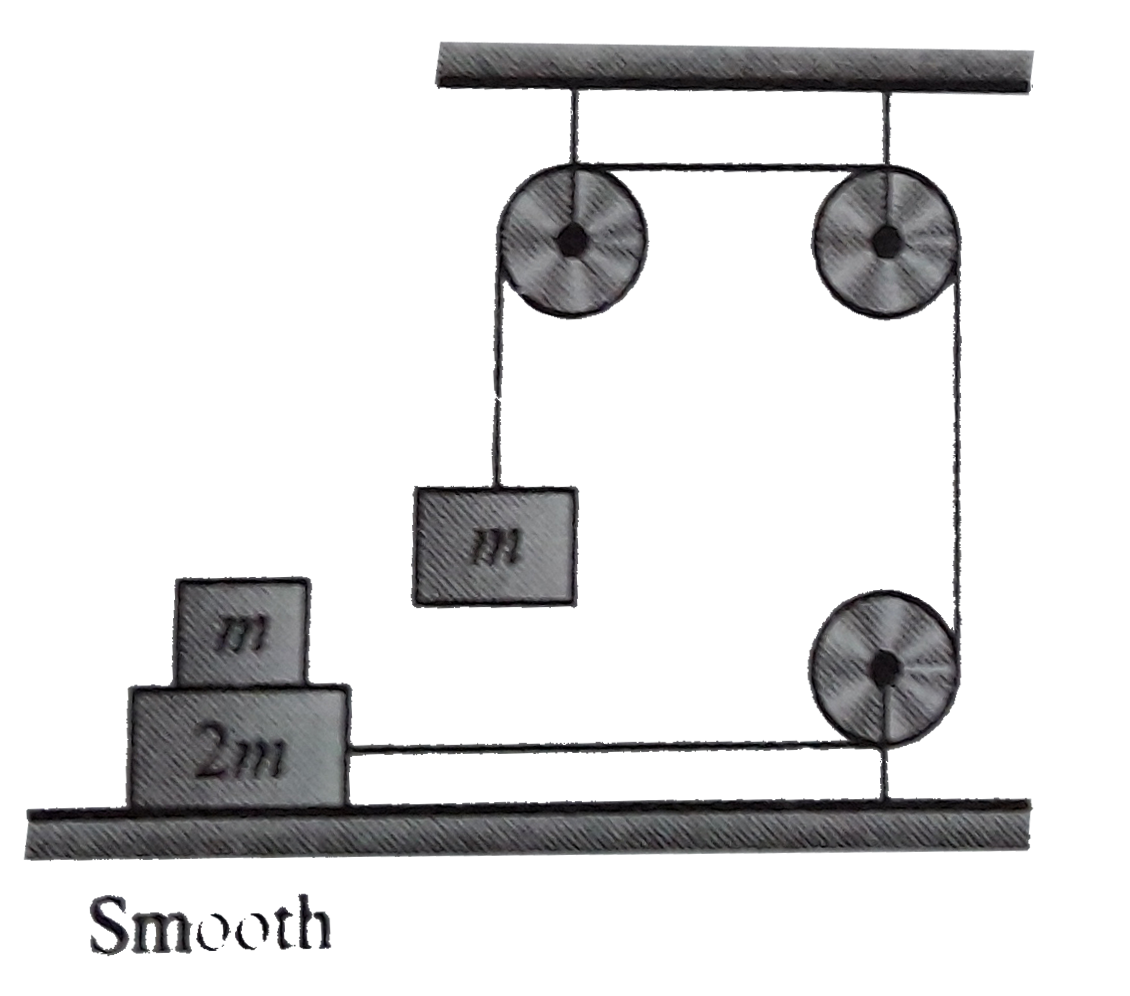 A12B1√2C14D13
A12B1√2C14D13Coefficient of friction between block of mass m and fixed wedge is μ=0.5. For what value of mM frictional force between block of mass m and wedge becomes zero ?
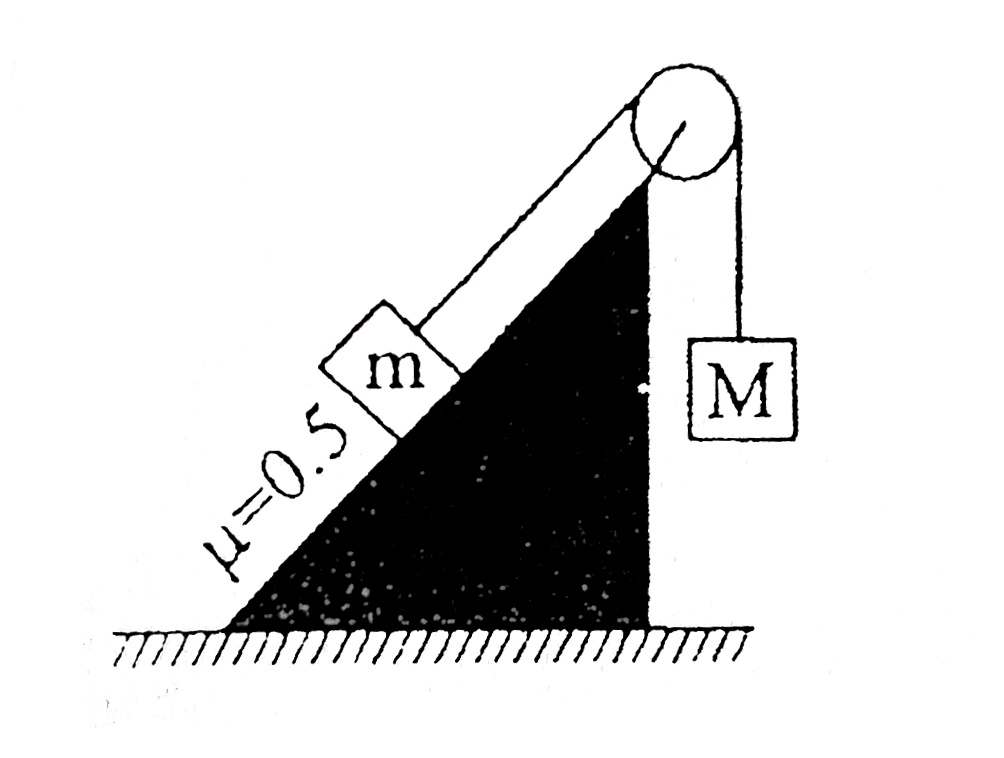 A12B2C1DNone of these
A12B2C1DNone of these
The block of mass M and are arrenged as the situation in fig is shown.The coefficient of friction between two block is μand that between the bigger block and the ground is μ find the acceleration of the block
View SolutionIn fig Block m2 is loaded on block m1 . If there is no relative sliding between the block and the inclined plane is smooth , find the friction force between the block
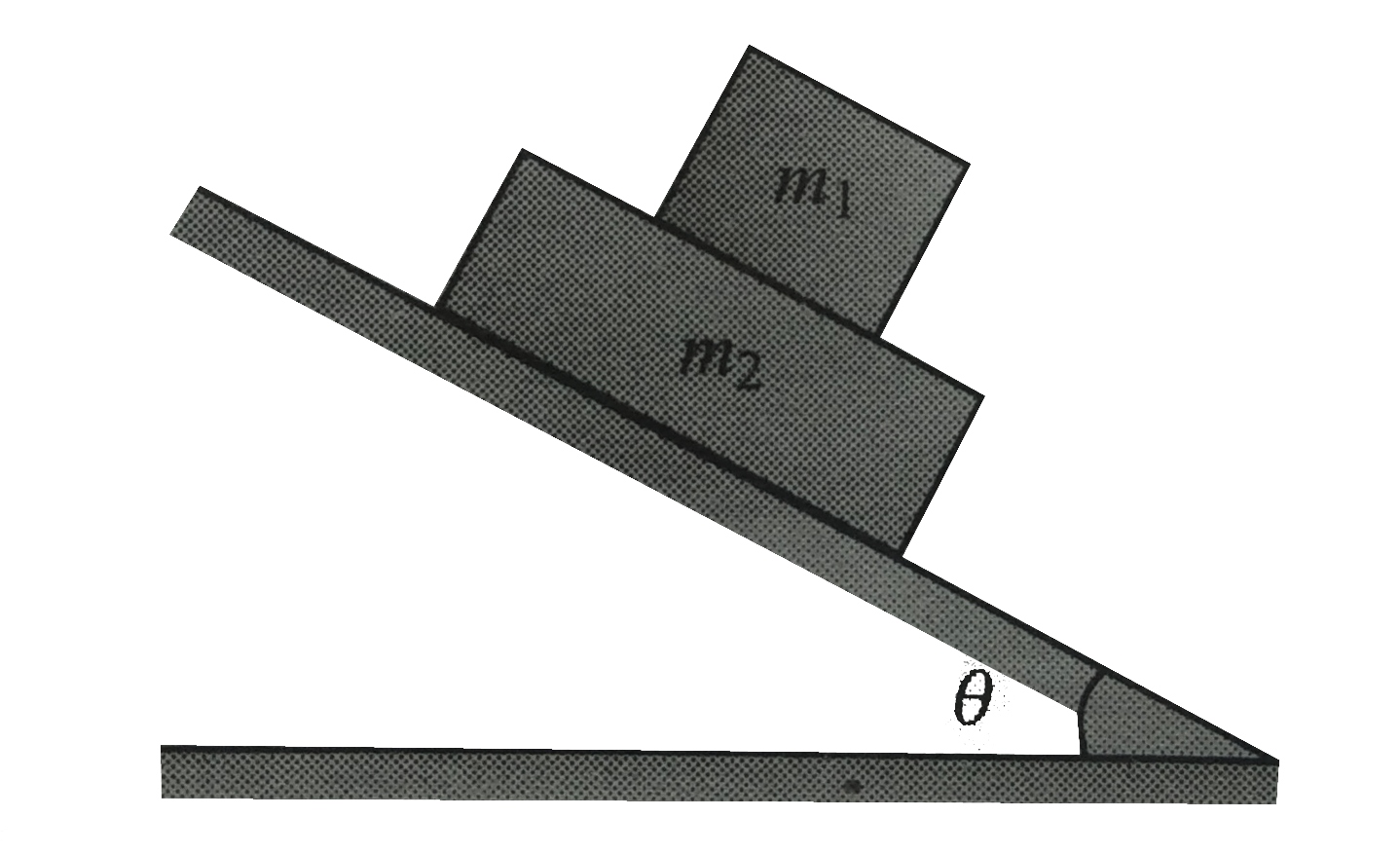
View SolutionIn the system shown all the surfaces are frictionless while pulley and string are massless. The mass of block A is 2m and that of block B is m. The acceleration of block B immediately after system is released from rest is
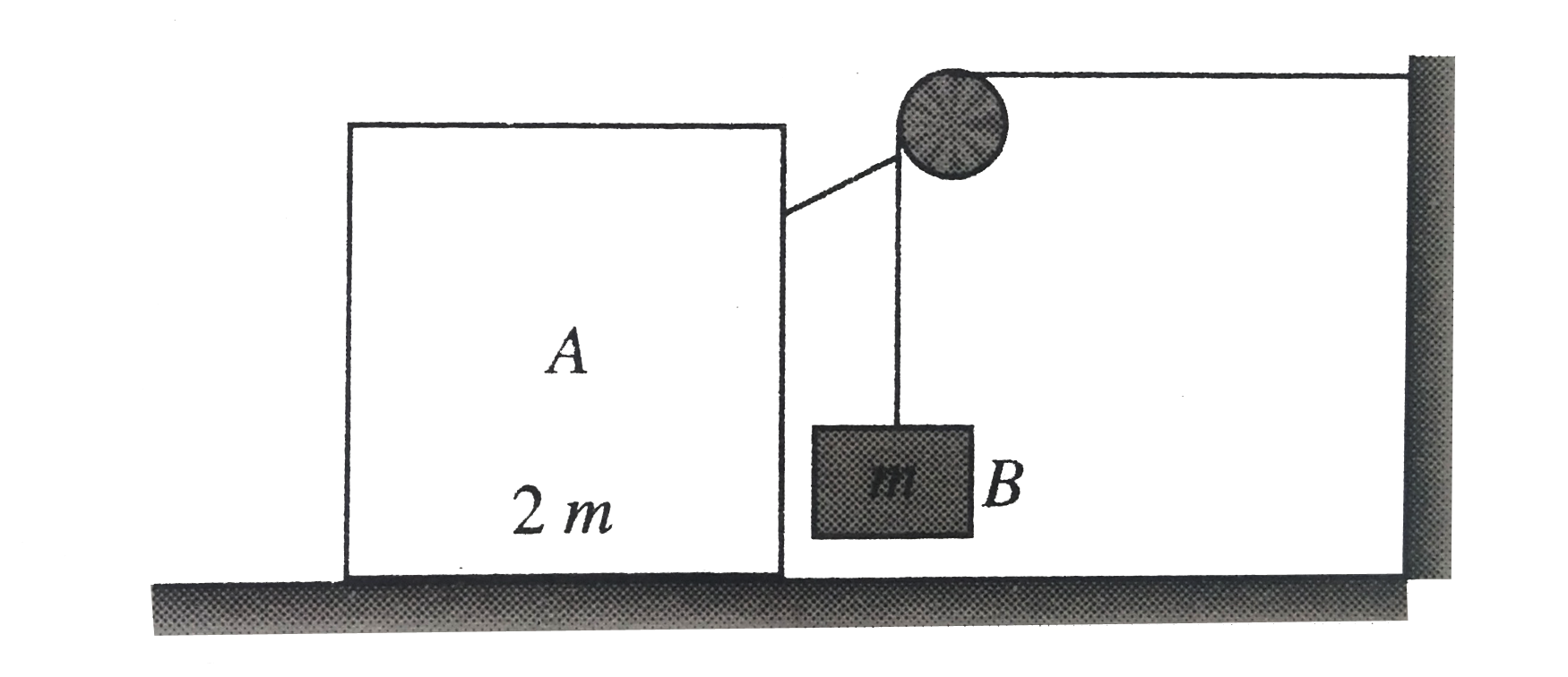
View SolutionThe coefficient of friction between the block A of mass m & block B of mass 2m is μ. There is no friction between block B & the inclined plane. If the system of blocks A & B is released from rest & there is no slipping between A & B then :
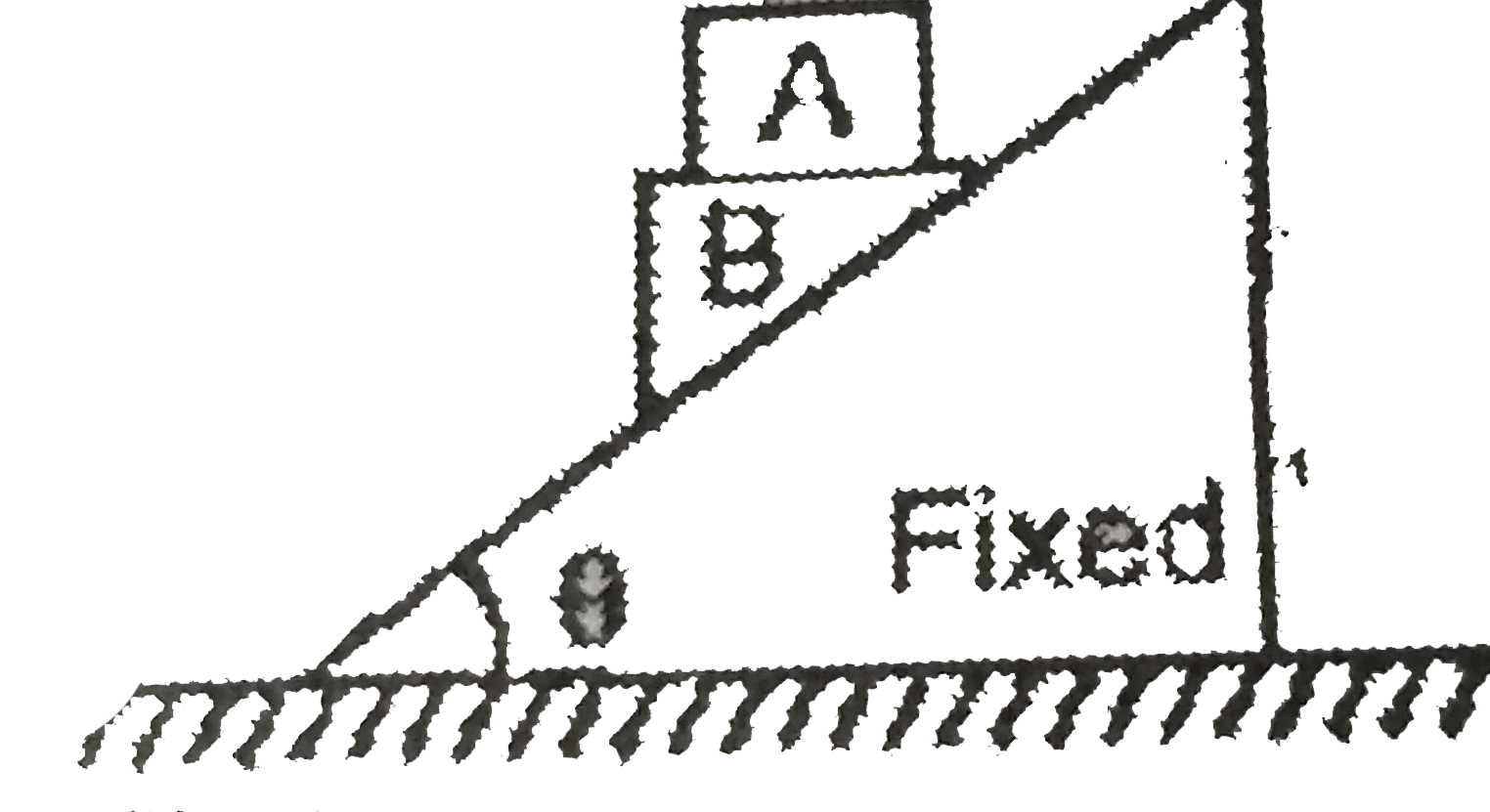
View SolutionThe coefficient of friction between the block A of mass m & block B of mass 2m is μ. There is no friction between A&B is released from rest & there is no slipping between A&B then:

View Solution
